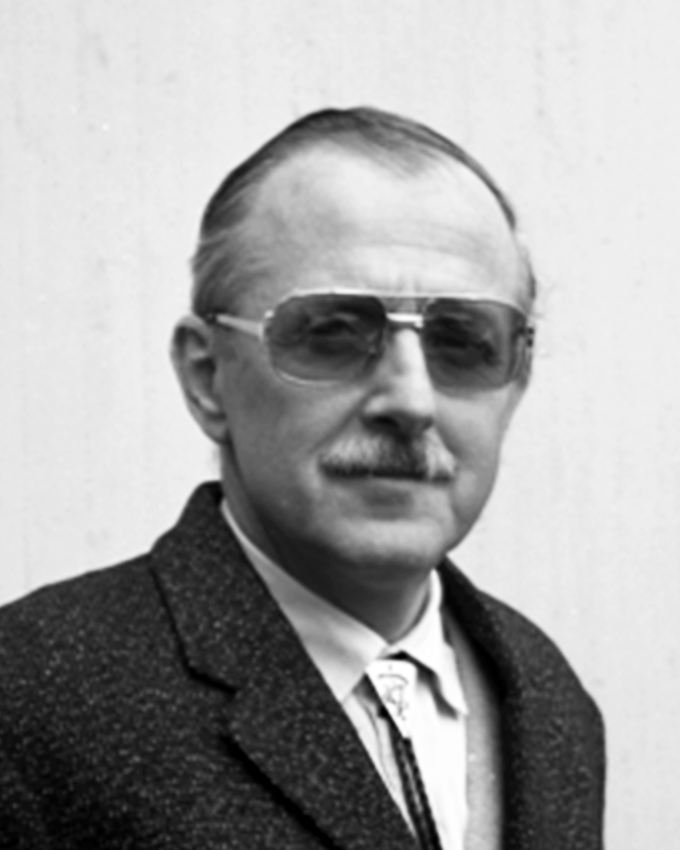
Peter Suter passed away on 12th February, after a short battle with pancreatic cancer. He was one of the fathers of veterinary radiology, pioneering and teaching to generations of students and residents the then new concepts of radiologic signs, pattern recognition, differential diagnosis, and systematic medical records as aids to radiological and clinical diagnosis.
His career began and ended in Zurich, Switzerland. Having been raised on the family farm, it was natural for him to choose veterinary medicine as a career. He graduated in 1955, did his dissertation for the Dr Vet Med degree on tuberculosis in wild carnivores, followed by working at a pharmaceutical company while continuing at the university as a lecturer in surgery, and marriage to Evelyn in 1959.
In 1960 their first son Martin was born and Peter began his career in radiology by being given the responsibility of building up a section of radiology at the faculty. In 1964, Christian was born. In 1962 Peter spent two months studying at the Department of Clinical Radiology at the Royal Veterinary College, Stockholm, Sweden, led by Sten‐Erik Olsson. One can imagine what an inspiration this visit was to the young and enthusiastic budding radiologist. Olsson had established a bone research lab at Cornell University Medical School, just up the road from the Animal Medical Center, where he became a consultant. It was natural for him to suggest Peter Suter as a candidate for the first radiology position at the AMC, and Peter arrived there in March 1967, the day after his PhD thesis, on lymphangiography, was published. The AMC was at this time attracting a group of young clinical specialists backed by a team of pathologists and human medical consultants, including the radiologist Kam Chan, an enthusiastic teacher. He and Peter collaborated on the development of the system of radiologic signs and patterns for lung radiology which was published in this journal in 1968 as Disseminated Pulmonary Diseases in Small Animals: A Radiographic Approach to Diagnosis. Free now to devote all of his time to his family and radiology, he collaborated with Stephen Ettinger on the first book on veterinary cardiology, and one of the first books devoted to one specialty, Canine Cardiology, which was published in 1970. During this period in New York, his son Roy was born.
In 1969 he joined Joe Morgan and Richard Park at the University of California, Davis. He taught a generation of students and residents there, while refining his understanding of radiology through the eyes of a surgeon, pathologist and physiologist, incorporating them in his magnum opus, Thoracic Radiography: A Text Atlas of Thoracic Diseases of the Dog and Cat, published in 1984. He wrote and published with his residents Barbara Watrous on oropharyngal dysphagias, and Sibylle Schmidt on hepatic and portal anatomy, which was done with meticulous angiography. The first edition of Ettinger’s Textbook of Internal Medicine in 1975 could not have been done without Peter’s help and collaboration.
He returned to Zurich as Professor of Internal Medicine in 1981, to apply all that he had learned in the US to improve and modernize his own faculty but was frustrated by resistance from the older and entrenched professors. Eventually many of his ideas on curriculum and teaching were adopted with the merging of the two schools in Switzerland. He also served as acting head of the department of surgery, and acting dean. He hired young clinical specialists, all trained abroad, to bring in new ideas. As there were no lecture notes in internal medicine, he wrote his own. As there were no modern textbooks in German, he substantially edited and rewrote a classic medical textbook for practitioners, Niemand’s “Praktikum der Hundeklinik,” the 10th edition (1244 pages, three kilograms!). This was published in 2006, co‐authored with one of his former students Barbara Kohn and other colleagues, ten years after his “retirement.”
His work habits and the high standards he set himself and his students and colleagues became legendary. At the AMC he took a short nap after lunch, which gave him the energy to devote late evenings, after time with his family, to his studying and writing. Rumor had it that his efficient habits while at Davis included reading the Wall Street Journal while riding his bicycle to work. He caused the publishers of Canine Cardiology to tear their hair out over his uncompromising high standards for the printing of the radiographs. He printed and published Thoracic Radiography himself rather than lower his standards or shorten the book to suit publishers’ ideas of what was marketable and profitable. Although Peter did make people angry because his expectations were so great, he made no enemies, as he did not expect of anyone more than they were capable of, or more than he gave himself. Peter exhibited unswerving dedication in working with others and with his patients. He was a scientist while still being a gentleman and an animal lover.
He actively supported the international radiology organizations. He was a Founder and Honorary Diplomate of the ECVDI, the first secretary of the EAVDI, and President and a Director of the IVRA. For his contributions to veterinary medicine he was acknowledged by awards from The American Animal Hospital Association, the World Small Animal Veterinary Association, IVRA and EAVDI.
In his later years, Peter delighted in his family, his five grandchildren, sitting in his carriage with Evelyn behind his beloved original Swiss Freiberger gelding Bingo, and spending many happy days in his garden full of fruit trees, blooming flowers and a corner with vegetables and herbs. There will always be wonderful colleagues and members of our profession, but never someone like Peter Suter.
Author: Drs. Stephen Ettinger, Peter Lord, and Mark Fluckiger